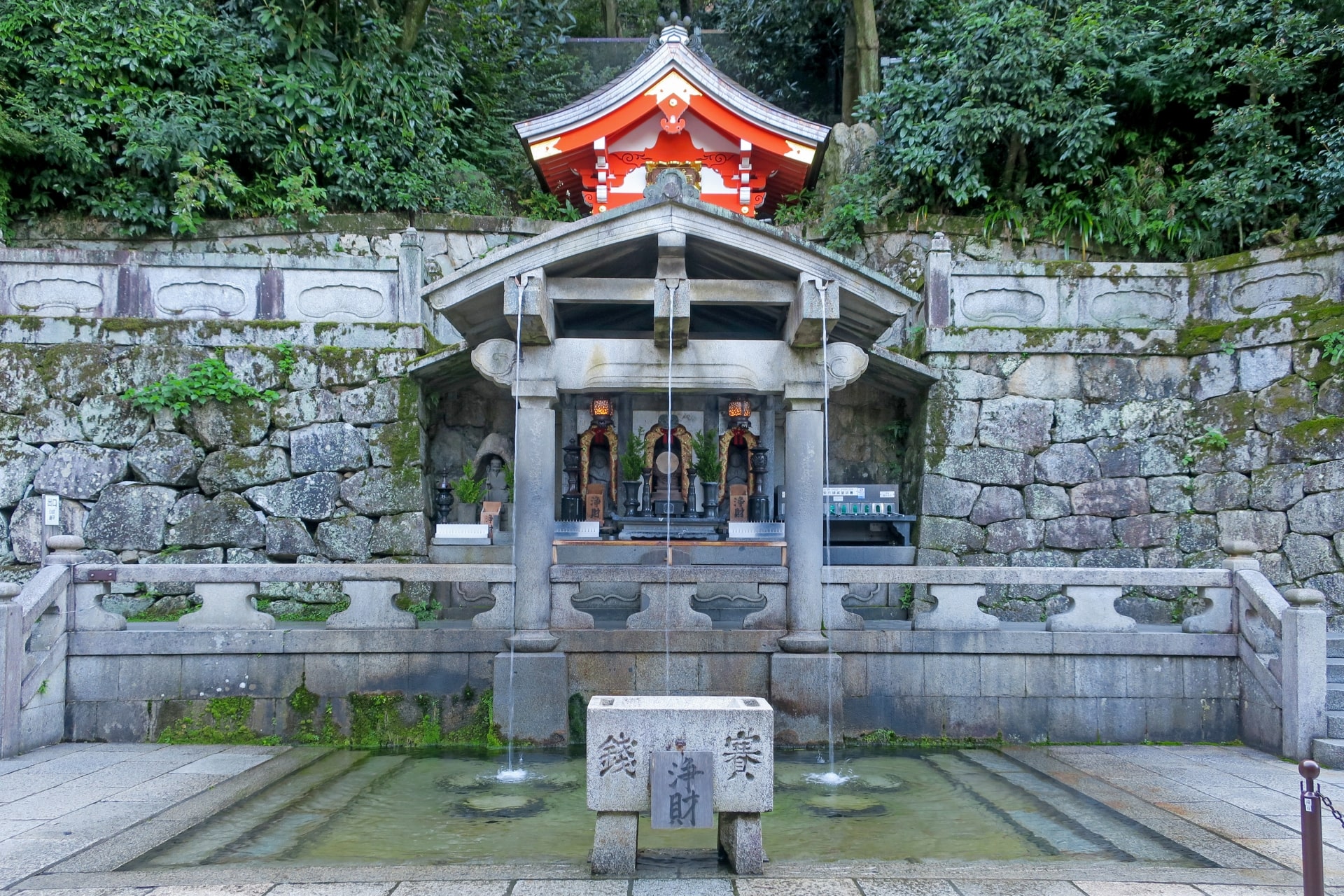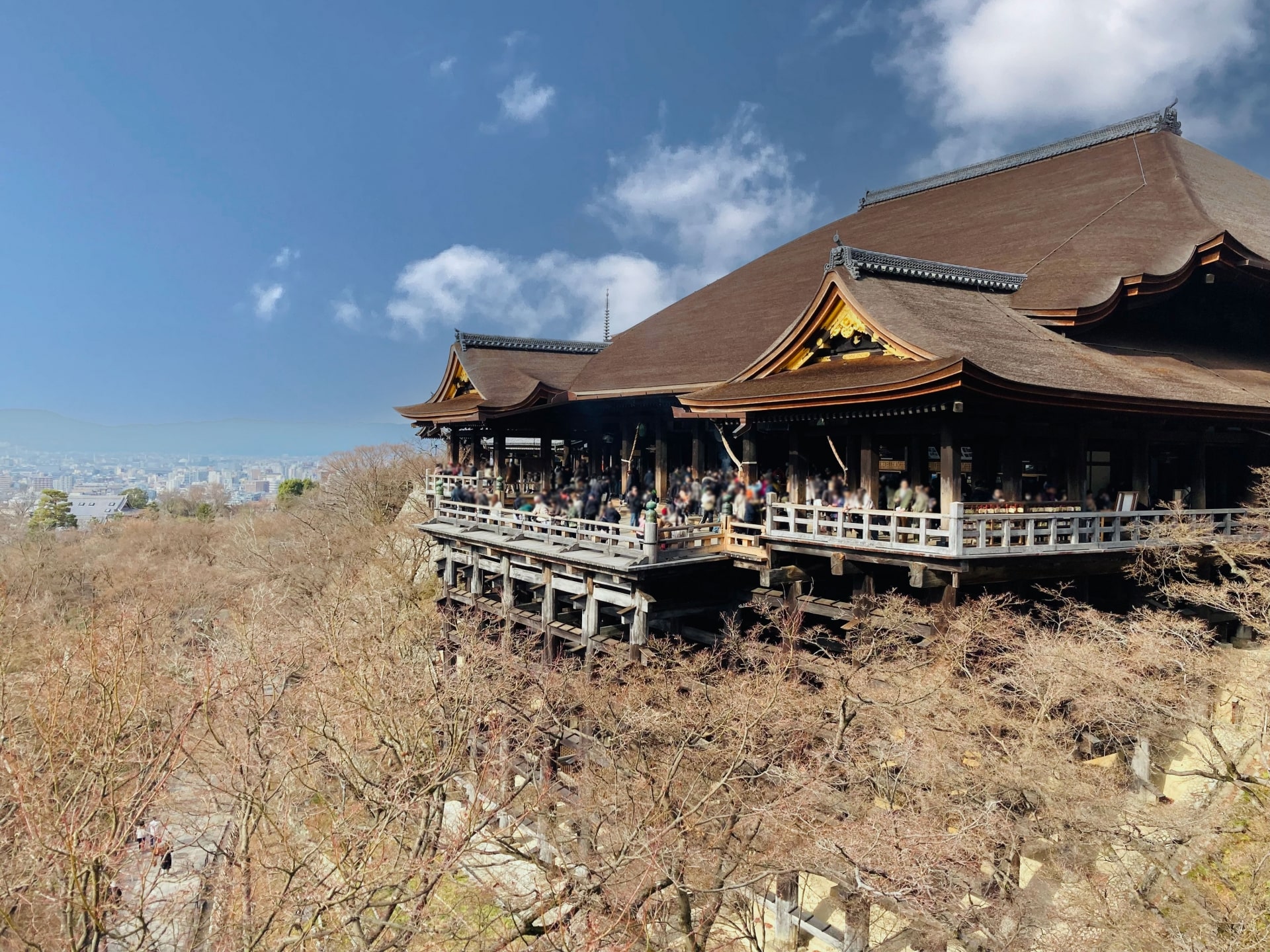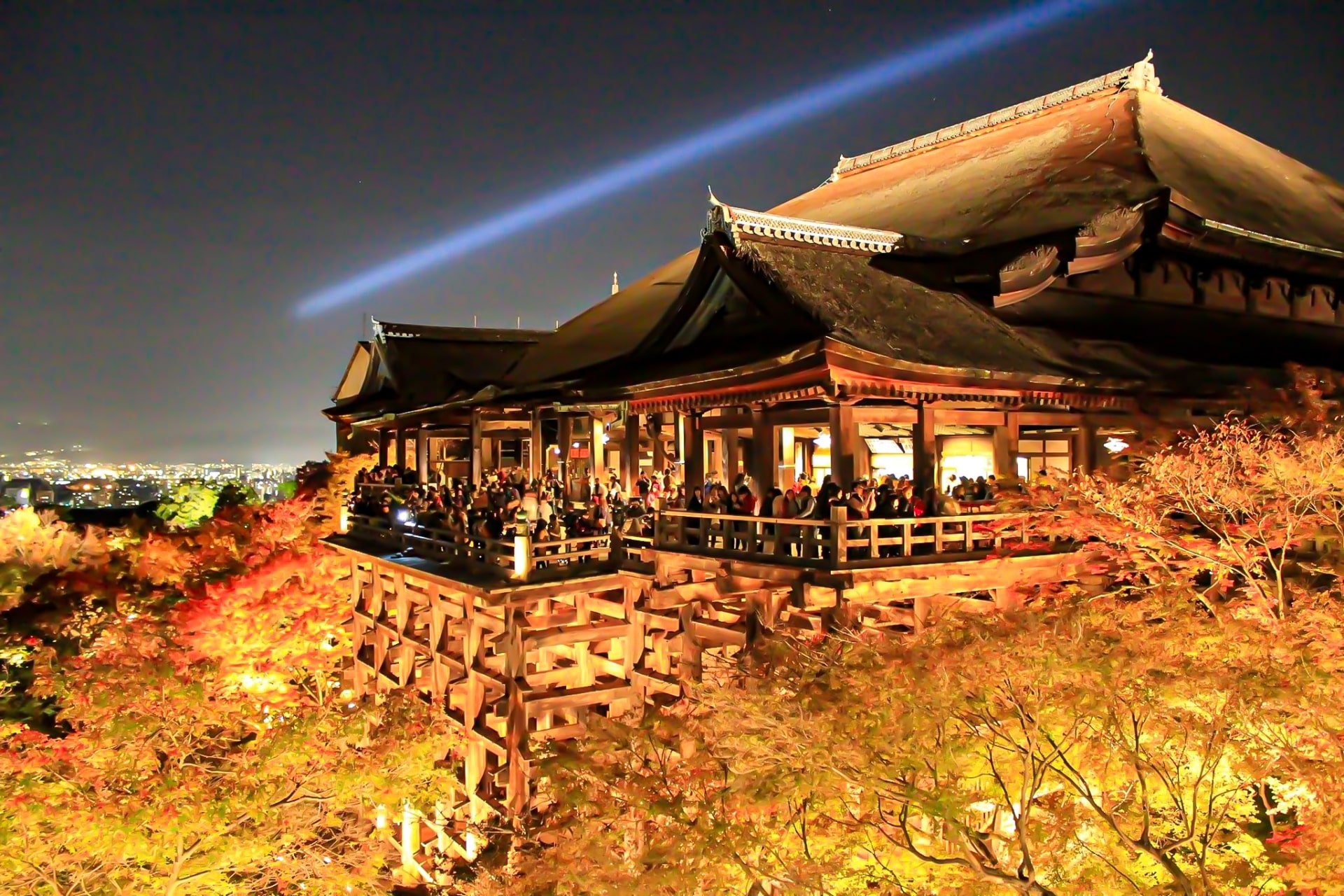Kiyomizu dera: Kyoto’s Sacred Waters
Guide to Kiyomizu dera

Perched on the edge of a hill with a view over Kyoto, Kiyomizu dera is one of the area’s most ancient temples where history, breathtaking scenery, and a touch of superstition come together. Founded well before Kyoto became Japan’s capital, this UNESCO World Heritage site is best known for its wooden stage that juts out over a lush hillside, with sweeping panoramic views of the city below.
The temple’s name, meaning “Pure Water Temple,” comes from the Otowa Waterfall that runs through its grounds, believed to bring good fortune to those who partake in its waters. It’s especially stunning with vivid autumn foliage and delicate cherry blossoms in spring, but Kiyomizu dera isn’t just a seasonal favorite but a year-round attraction that keeps visitors coming back. This temple never fails to make a lasting impression. If you’re drawn by the centuries-old architecture or the wish for a little extra luck, keep reading for details!
If you need a general overview of Kyoto, don’t miss our All-in-One Guide to Kyoto!
What is Kiyomizu dera?


What to See and Do at Kiyomizu dera?
When visiting Kiyomizu dera, there’s plenty to explore. Here’s a rundown of the must-see spots and activities:
The Main Hall
Famous for its wooden stage, the Main Hall (Hondo) is the heart of Kiyomizu dera. From here, you can enjoy sweeping views of Kyoto, especially stunning during cherry blossom season and autumn.
Otowa Waterfall
The temple’s namesake, Otowa Waterfall (音羽の滝) has three streams of water, each offering a different blessing—long life, academic success, and luck in love. Use a long-handled cup to take a sip and choose wisely!

Jishu Shrine
Dedicated to the deity of love and matchmaking, Jishu Shrine (地主神社) is a popular spot among those looking for romance. Don’t miss the “love stones”—two stones placed 18 meters apart. It’s said that if you can walk between them with your eyes closed, your wish for love will come true.
Koyasu Pagoda
Located a short walk from the Main Hall, Koyasu Pagoda (子安塔) is a three-story pagoda that offers a picturesque view of the temple and surrounding hills. It’s believed that a visit here can grant a safe and easy childbirth.
Zuigu-do Hall and Tainai-meguri
A unique experience, Zuigu-do Hall (随求堂) and Tainai-meguri offers a chance to walk through complete darkness, symbolizing a return to the womb of a female bodhisattva. The journey represents a spiritual rebirth as you emerge into the light.
Shopping at the Entrance
The approach to Kiyomizu dera, known as the Chawan-zaka or “Teapot Lane,” is lined with shops selling traditional crafts, sweets, and souvenirs. It’s a great place to pick up a keepsake or sample Kyoto’s famous yatsuhashi (八ツ橋) sweets.
Seasonal Illuminations
During spring and autumn, Kiyomizu dera hosts special night-time illuminations, offering a magical view of the temple and the surrounding cherry blossoms or autumn leaves under a glowing sky.
How to get to Kiyomizu dera
Fom Kyoto Station:
By Bus
The most convenient way is to take Kyoto City Bus No. 100 or No. 206 from Kyoto Station to the “Gojo-zaka” (五条坂) or “Kiyomizu-michi” (清水道) bus stops. The ride takes around 15 minutes, followed by a 10-minute uphill walk to the temple entrance. Both stops are within easy walking distance to the temple.
By Train
Take the Keihan Main Line to Kiyomizu-Gojo Station (清水五条駅). From the station, it’s about a 20-minute walk uphill. Alternatively, you can take a bus from the station to the Gojo-zaka bus stop if you’d like to shorten the walk.
 Address Address |
1 Chome-294 Kiyomizu, Higashiyama Ward, Kyoto, 605-0862 |
|---|---|
 Business Hours Business Hours |
Opening hours is from 6:00 to 18:00 |
 Price Price |
Entrance fee is 500 yen |
 Official Website Official Website |
https://www.kiyomizudera.or.jp/ |
Tourist Reviews of Kiyomizu dera
Kiyomizu-dera Temple in Kyoto, one of Japan’s most treasured landmarks, garners exceptional praise from visitors. With a Google rating of 4.5 based on 55,381 reviews, a TripAdvisor score of 4.5 from 11,735 reviews (ranking it #2 out of 2,104 things to do in Kyoto), and a Yelp rating of 4.5 from 116 reviews, the temple is celebrated for its breathtaking views, historic architecture, and cultural significance.
One TripAdvisor reviewer highlighted the experience:
After walking up the steep but beautiful street we entered the main gate. It was flooded with so many people but was so breathtaking. We walked further to buy a ticket to get within the temple (very cheap!). The views were to die for – yet crowded! The shrines were so picturesque, but remember that where there is art, there is a queue!
–from TripAdvisor
A Yelp reviewer praised both the temple and the experience of getting there:
Beautiful temple situated at the end of Sannenzaka, and the crowd definitely seconds this sentiment! Though there are a lot of people, the views are worth it, and the wooden structure is definitely impressive. There is also a small shrine at the foot of the temple that you can line up to drink from. There are three streams of water that you should drink one from. Looking at the shrine from right to left they represent health, love, and success. There are some UV cleaning apparatus for the shared ladles for getting the water, so it is pretty clean and well thought out!
Would recommend to make your way through Sannenzaka first by foot to get an idea of the stores, visit the temple, and then go back along Sannenzaka to then thoroughly shop to your heart’s desire.
Tourist Attractions Near Kiyomizu dera
Kiyomizu dera is surrounded by a wealth of attractions that showcase Kyoto’s historic charm. After visiting the temple, explore these nearby spots to enrich your experience:
1. Ninenzaka and Sannenzaka

More info: Ninenzaka and Sannenzaka: Unspoiled Historical Alleys in Kyoto
2. Yasaka Shrine

More info: Yasaka Shrine: The Spirit of Gion
3. Kodaiji

More info: Kodaiji Temple: a Gorgeous Stone Garden Temple with Light up
4. Higashiyama Mount Peak Park Observatory

It’s an ideal spot for photography, particularly at sunset, when the city lights start to twinkle against the backdrop of the surrounding mountains. The walk to the observatory is a bit of a climb, but the sweeping views are well worth the effort.
 Access Access |
7-min drive from Keage Sta |
|---|
For more information about landmarks and traveling in Japan, check the articles below, too!
Written by
Photographer, journalist, and avid urban cyclist, making sense of Japan since 2017. I was born in Caracas and lived for 14 years in Barcelona before moving to Tokyo. Currently working towards my goal of visiting every prefecture in Japan, I hope to share with readers the everlasting joy of discovery and the neverending urge to keep exploring.













